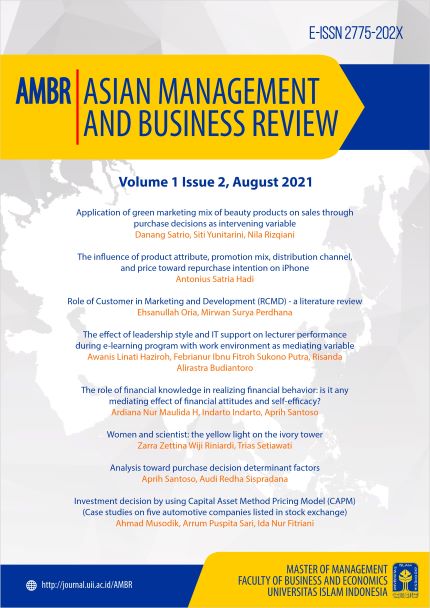Main Article Content
Abstract
The lecturer performance appraisal system is the work of lecturers within the scope of their responsibilities which refers to a formal and structured system used as an instrument to measure, assess, and influence work-related traits, control lecturer behavior, including absenteeism rates and work results. Lecturer professionalism must, of course, be related and built through mastery of fundamental competencies in carrying out and completing their duties and work as lecturers, such as professional competence, social competence, and personal competence. The low performance of lecturers is suspect of having reasons such as lack of attention and concern from leaders, for example, less effective leadership styles, less communicative work relationships, lack of harmony, lack of welfare, lack of motivation, lack of a comfortable work environment, and lack of satisfaction felt by the lecturers. Based on these reasons, further research is needed on the influence of leadership style and work environment on lecturer performance in carrying out the teaching and learning process at private universities in Semarang. This research is a quantitative study with a sample of 127 permanent lecturers in the management department of private universities in Semarang. The analytical technique used in this study is path analysis with the results. Among others, leadership style, information technology support, and work environment significantly affect lecturer performance. Furthermore, the work environment can mediate the relationship between leadership style and information technology support on lecturer performance.
Keywords
Article Details
Authors who publish with this journal agree to the following terms:
- Authors retain copyright and grant the journal right of first publication with the work simultaneously licensed under a Creative Commons Attribution-ShareAlike 4.0 International License that allows others to share the work with an acknowledgement of the work's authorship and initial publication in this journal.
- Authors are able to enter into separate, additional contractual arrangements for the non-exclusive distribution of the journal's published version of the work (e.g., post it to an institutional repository or publish it in a book), with an acknowledgement of its initial publication in this journal.
- Authors are permitted and encouraged to post their work online (e.g., in institutional repositories or on their website) prior to and during the submission process, as it can lead to productive exchanges, as well as earlier and greater citation of published work (See The Effect of Open Access).
